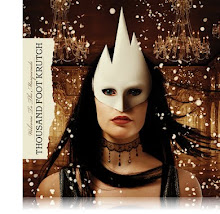 What type of magazine is it?
What type of magazine is it?It is an indie/rock magazine. It also features major pop artists (sugababes are on the cover of this one)
From the front cover what kinds of issues/articles are going to be inside?
“the 50 bands you must see before you die!” , there is going to be a chart on this in there. “199 albums reviewed and rated”, album reviews also will be inside.Who is the target audience for the magazine? What particular age group? What are their interests? How do you know all of this?
The target audience starts at people in their teens; its main audience though, are people in their late twenties and early thirties. You can tell this from the bands listed on the front cover, for example the front cover mentions “Oasis” and “U2”, their fans are in their twenties thirties and above. They do have fans in their teens but primarily late twenties onwards. The magazines images all are taken professionally (they were taken in a photo-shot rather than paparazzi pictures.) The colours used on the front cover are also black white and red, red is Q’s main colour and in their logo (so to is white) and is also a colour that their target audience like and find attractive. They also do like black and that attracts some more of their audience in.
What mode of address is the mag using? What does this tell you about the type of relationship it wants with its reader?
The magazine uses a very inclusive mode of address. “The 50 bands you must see before you die!” is addressing the audience and also will be interesting for anyone interested in music not just people who read Q, the same with “199 albums reviewed and rated” will be addressing anyone interested in audience rather than a specific one. Q has a very open relationship with its readers, the articles it features will interest its main audience but will also include anyone else which gives them the chance to increase their audience
Who is on the front cover and why?
The Hives are the main “model” on the front cover. They are features on the front cover possibly because they have an interview inside the magazine, but probably because they feature very high in Q’s chart about bands to see. Have the sugababes on the cover with a bar on the bottom reading the cover line “Sugababes: Sex, Lies And Kidnapping.” ; This will be an article in the magazine thus why they are on the cover. It also features radiohead in the top right hand corner, the picture is them performing at a gig, so they feature an article about them in my magazine.
What does the main cover line say? What does this imply about the artist/band?? What overall message is the artist/band giving?
“THE 50 BANDS YOU MUST SEE BEFORE YOU DIE!" This implies that the bands mentioned in this chart have amazing gigs, the artists on the front cover “the hives” must be in this chart and very high in it seeing as they are the main model on the front cover. This gives the message that they should be seen performing live while you can because, according to Q, they are good.
Are there any ‘buzz’ words? What effect does it have on the reader?
“Die!” is a buzz word, with the word before in front of it, it gives the implication that this is urgent, also die makes whatever this is very serious. Die is also written in red, compared to the black font most of the other cover lines are written in so it makes it stand out more, plus, it has an exclamation mark at the end to further make it stand out of the page.
Is there a strapline/selling line/slogan? What does it tell you about the magazine? How does it help to attract readers?
“Britain’s Biggest Music Magazine” This tells you that this magazine is a good magazine and the rest of the British public think so, if it is the best in Britain then the audience will trust that what’s inside will probably be very valuable music information to them.
What strategies does the magazine use to attract the audience?
The magazine mentions big artists the audience would like, extreme and attention grabbing cover lines to primarily attract its audience. The language used is inclusive so it will include anyone interested in music.



No comments:
Post a Comment